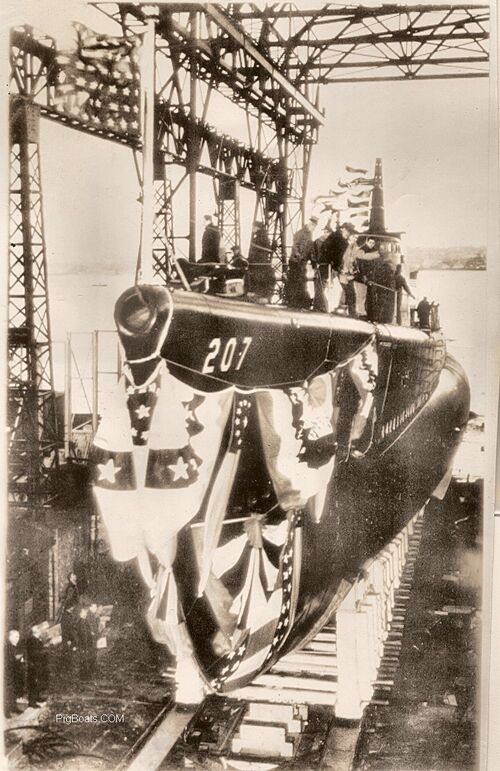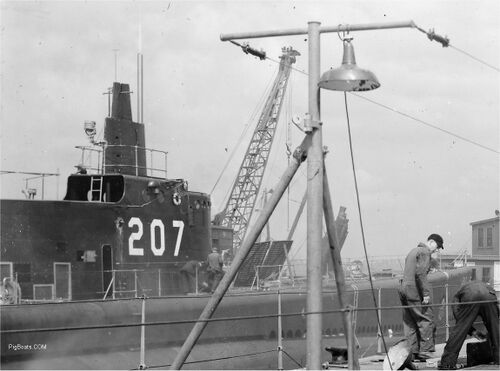207

Photo in the private collection of Ric Hedman.

Grampus at the fitting out pier at Electric Boat, January 3, 1941. Work to complete her is ongoing, with the growing crisis in Europe putting emphasis on their work. The submarine in the foreground is the Gar (SS-206), this photo is a detail from that larger photo. Workmen of the bridge are working on mast installation.
Photo courtesy of the Submarine Force Library & Museum.

Grampus on March 30, 1941 in the final stages of fitting out at Electric Boat in Groton, CT. Grampus was largely complete at this point, only corrective work generated by the sea trials remained until her commissioning.
Photo courtesy of the Submarine Force Library & Museum.

USS Grampus (SS-207) on November 1, 1941 undergoing post-overhaul shakedown trials off Portsmouth, N.H. She had gone to the yards for a brief overhaul after having returned from the Caribbean with USS Grayback (SS-208), where they conducted mock war patrols. By December 22, 1941 Grampus was on her way to the Pacific to join the war.
The object in the right foreground is the top of the jack staff. It was a two-part unit. The bottom being the fore most stanchion of the lifelines and the top half having the bow light and flag hoist. It was folded to the deck when not in use.
Photo provided by Mike Kaup.

Excerpted from U.S. Navy War Damage Reports:
"On the night of 17 May 1942, while conducting a surface patrol off Truk during her second war patrol, Grampus was detected by a Japanese patrol vessel and forced to make a quick dive. While passing 30 foot depth, one shell, believed to have been a 3-inch or 4.7-inch common projectile, struck the starboard bulwark of the cigarette deck and detonated approximately three feet beyond its point of impact about two feet above the cigarette deck over the main engine air induction trunk. While no damage of a serious or military nature was caused, and Grampus experienced no difficulty in subsequently evading the enemy, the action has been included in this report to illustrate the shrapnel effect of medium caliber projectiles and the obvious vulnerability of submarines to such attacks. While other U.S. submarines have been more heavily damaged by gunfire attack, this experience of Grampus was chosen since it is the only such action in which photographs of the damage were available to the Bureau. "
Photo courtesy of The U.S. Navy War Damage Reports and ibiblio.org.

Another view of the shell fragmentation damage to Grampus' bulwark around the cigarette deck, looking to port. The damage to the bulwark was extensive, but rather than fix it, it is likely that the bulwark was simply cut away and discarded as part of the effort to lessen the boat's silhouette.
Photo courtesy of The U.S. Navy War Damage Reports and ibiblio.org.

The effects of the shrapnel on the paint of the conning tower fairwater is dramatically illustrated in this view looking forward on the port side of Grampus' cigarette deck. Beyond the officer standing on the perforated box is the covered pilothouse.
Photo courtesy of The U.S. Navy War Damage Reports and ibiblio.org.
Page created by:
Ric Hedman & David Johnston
1999 - 2023 - PigBoats.COM©
Mountlake Terrace, WA, Norfolk, VA
webmaster at pigboats dot com
